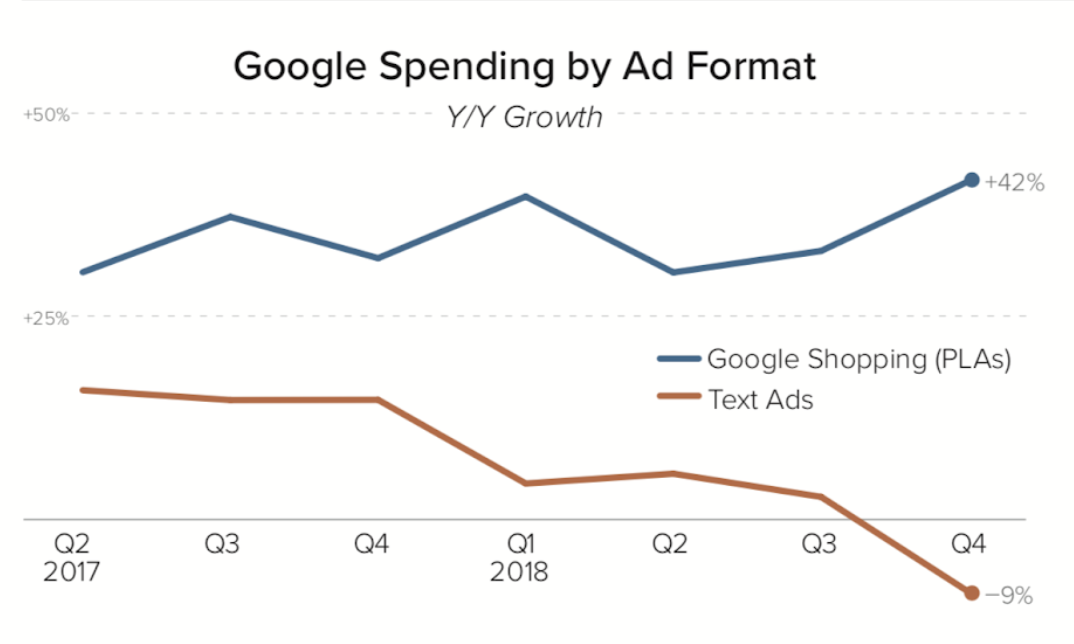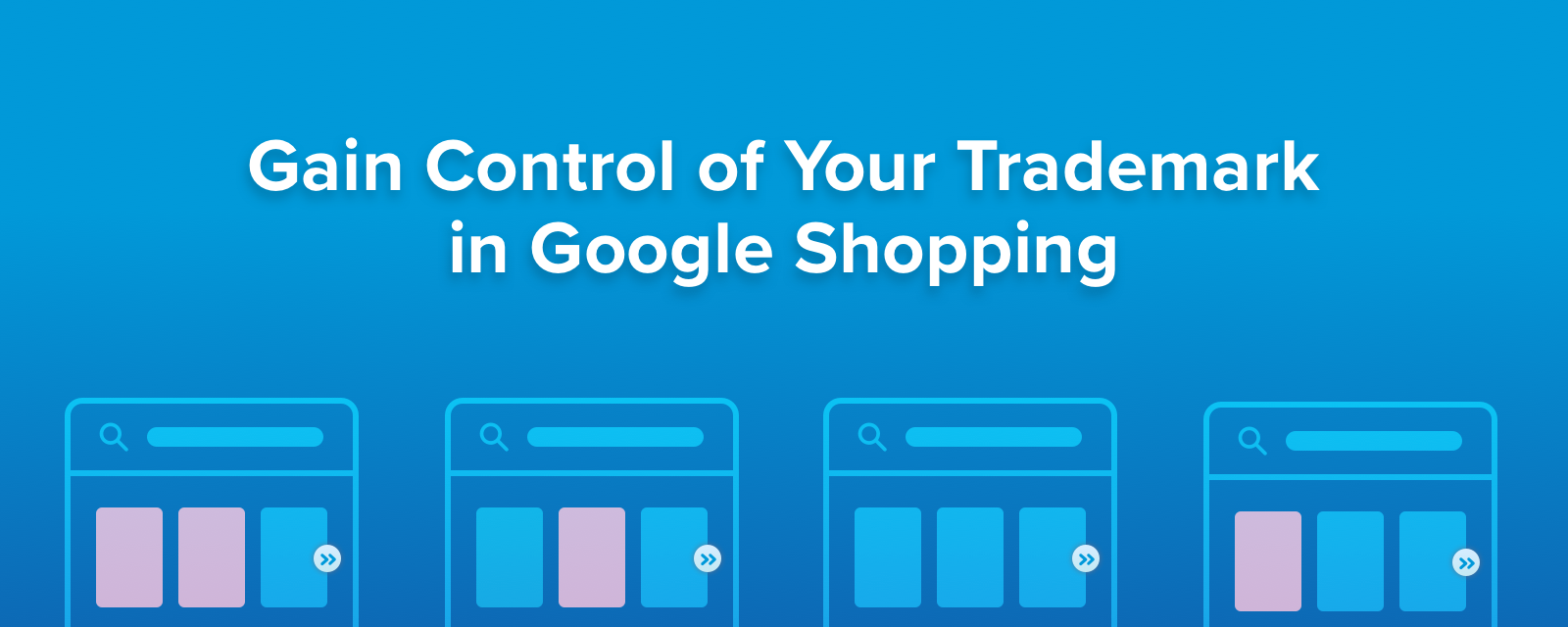The Rise of Google Shopping
Most paid search experts believe Google Shopping is a big opportunity for online retailers and it will continue to play an important role in years to come. According to Merkle’s Digital Marketing Report for Q4 2018, while text ad spending fell 9% Y/Y following three quarters of single-digit growth, spending on Google Shopping ads grew 42% Y/Y in Q4 2018. This was the highest growth rate for Google Shopping spend since mid-2016. For retailers, Google Shopping ads accounted for 63% of all Google search ad clicks–an all-time high as well.

Source: Merkle's Digital Marketing Report for Q4 2018
More and more customers are discovering your products through third-party ads on Google Shopping, so it's important to understand what you, as the brand holder, can do to ensure a smooth and authentic customer experience.
Protecting Your Customer’s Google Shopping Experience
While Google has made it more difficult for advertisers to use trademark terms in text ads, Google Shopping is a different story. There are fewer policies for retailers and Original Equipment Manufacturers (OEM) to leverage to help protect their customer journey from start to finish.
Fortunately, there is one policy that helps bring control back to OEMs. Through this policy, you can stop violators from misleading your customers and disrupting the brand experience you’ve worked hard to create. This blog post explains what the Google policy is and how you can use it to ensure that third-party sellers don’t derail the tailored customer journey you have created.
The Nightmare Scenario
Let’s consider the scenario that keeps digital marketers up at night. Your company, Dyson for example, manufactures vacuums and vacuum parts. One of your customers needs a replacement battery for his cordless vacuum. After doing a branded search for “V10 absolute battery,” he sees an ad for your branded product in the Product Listing Ad (PLA) section of the Google Search Engine Results page (SERP). He notices that the price is much lower than he’s seen elsewhere, so he clicks through to purchase the product.
The new battery arrives in the mail to his home a few days later but appears to be of a lower quality than he was expecting from the brand he knows and trusts. The battery barely fits into the vacuum, the packaging looks different, and something seems off to this savvy customer. Much to his disappointment, the battery gives out after one month.
Your brand reputation has been tarnished as a result of this one interaction and it could have been prevented at the start of the customer journey. If the customer had known that he was looking at a third-party product, he may not have purchased it, even at the lower price point. And even if he did buy the third-party product, any negative outcomes would be associated with the other manufacturer, not your brand.
Google’s Policy on Compatible or Refurbished Third-Party Product
What can a digital marketer do to avoid the nightmare scenario described above? Luckily, Google has a policy that will help you take down ads of third-party products masquerading and falsely advertising as an OEM product.
Google’s compatible or refurbished third-party product policy spells out a number of requirements for sellers advertising third-party products that are compatible with OEM products. These requirements are content-based and are intended to make the condition and origin of the product explicit. Google’s intent is that the origin of non-OEM products is obvious to a consumer.
In the policy, Google provides the following example of what is allowed:

We found an example of a violation of this policy, as it pertains to OEMs in a variety of verticals including vacuum manufacturers:
 The first PLA on this SERP looks to be a Dyson Battery and is at a lower price point than the rest of the PLAs being served. The product is not an OEM product, as it may seem, and could lead to the nightmare scenario described above.
The first PLA on this SERP looks to be a Dyson Battery and is at a lower price point than the rest of the PLAs being served. The product is not an OEM product, as it may seem, and could lead to the nightmare scenario described above.
Thankfully you could take action against this type of listing. Why? The wording is misleading and lacks any indication that the product is made by a third-party manufacturer.
Take Back Control
Enforcement of Google’s compatible or refurbished third-party products policy in the PLA channel on Google creates an opportunity for relevant brands, especially OEMs with an online presence, to take action against advertisers misleading consumers in their brand’s space.
Finding instances of brand abuse manually is both difficult and time-consuming. Submitting the infringing ads to Google for takedown can also be a time-intensive process. BrandVerity is now offering select beta partners the only policy violation discovery and enforcement solution in the market. The solution makes it easy to keep an eye on your trademark in Google Shopping and take action against those who violate Google’s policy on compatible or refurbished third-party products. With BrandVerity, you can expand your enforcement through our automated product listing ad monitoring and submission process, protecting the customer journey that you’ve created for your brand.
If you are interested in partnering with us on our beta product, please contact us to be included.

